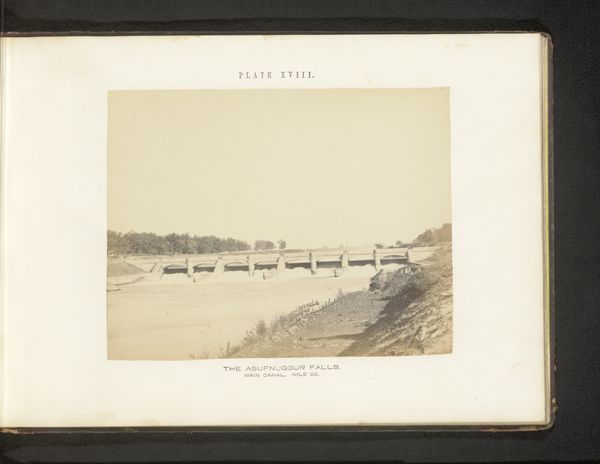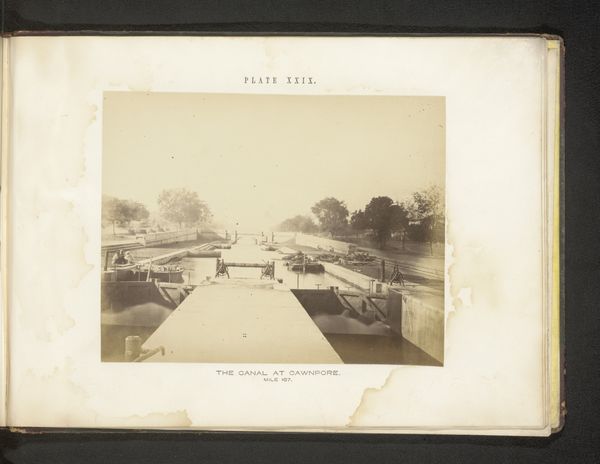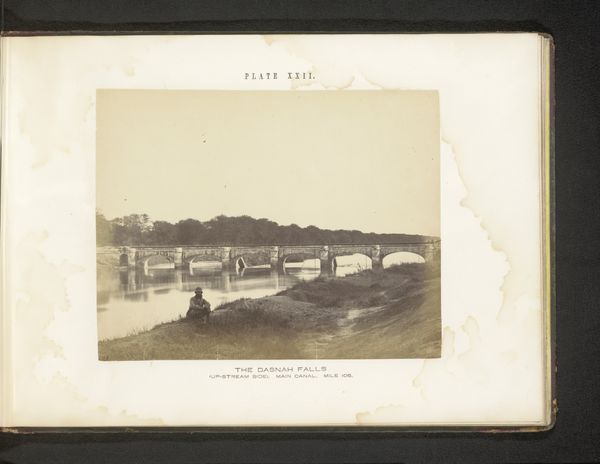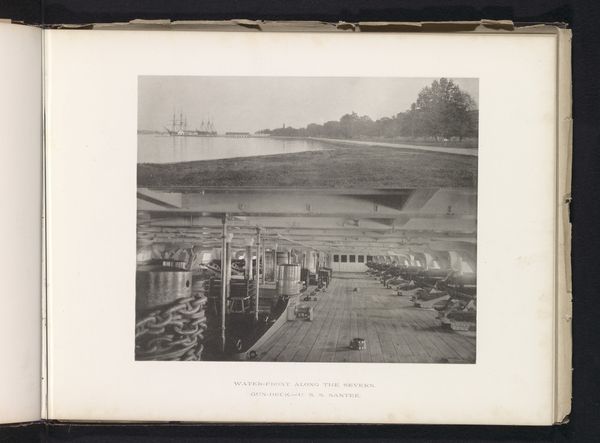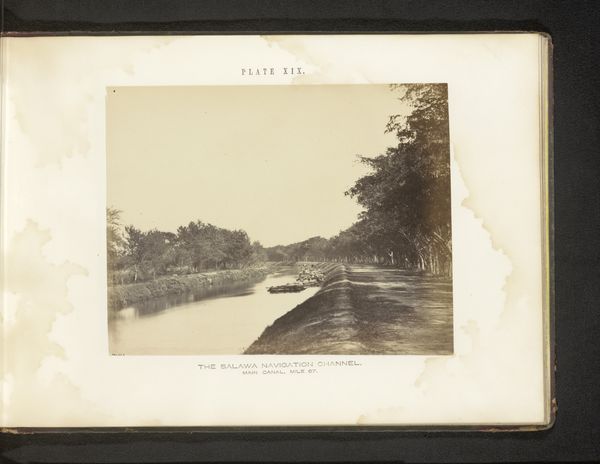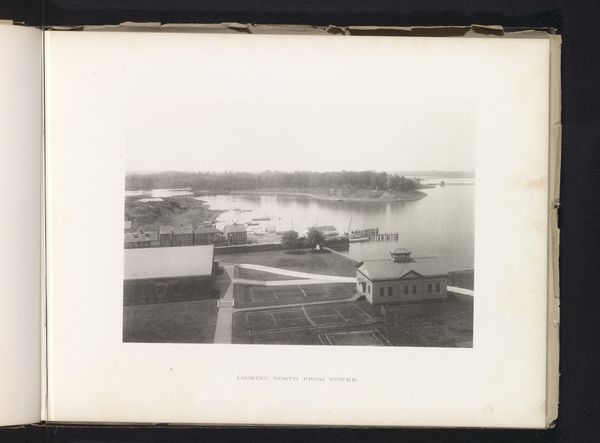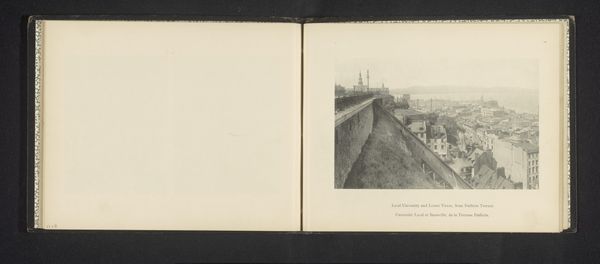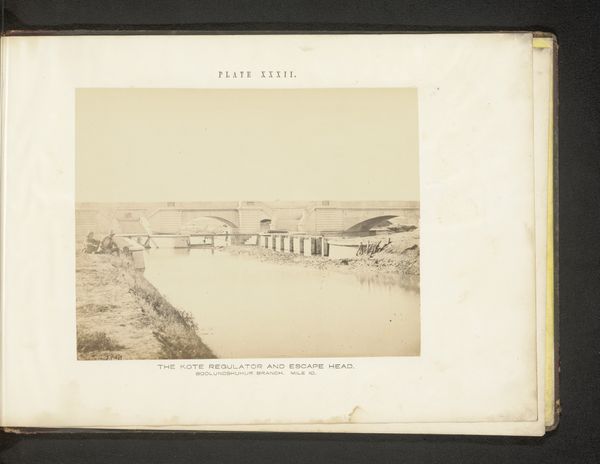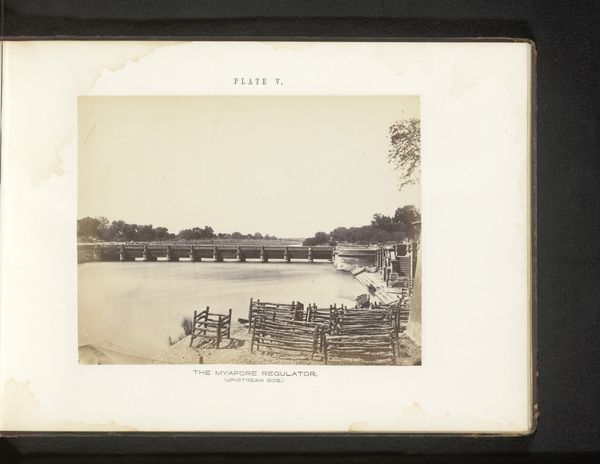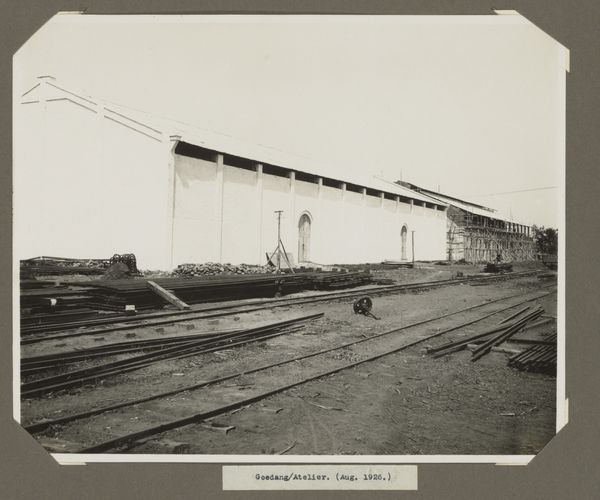
print, photography, albumen-print
#
aged paper
#
toned paper
#
light pencil work
#
homemade paper
#
pale palette
#
muted colour palette
#
ink paper printed
# print
#
light coloured
#
landscape
#
river
#
photography
#
personal sketchbook
#
orientalism
#
albumen-print
#
realism
Dimensions: height 181 mm, width 235 mm
Copyright: Rijks Museum: Open Domain
Curator: This is a photograph titled "Solani Aquaduct bij Roorkee", dating to before 1867, by Thomas George Glover. It’s an albumen print. Editor: There’s something melancholy about this image, isn’t there? The muted tones, the seemingly endless stretch of the aqueduct...it feels almost desolate. Curator: That might be the effect of time on the albumen print itself; it has definitely aged. But there's also the context. The Solani Aqueduct was an ambitious feat of British engineering in India, designed to irrigate the Doab region. So, we're seeing a landscape transformed by colonial intervention. Editor: Right, and that explains the unsettling feeling! The aqueduct imposes itself on the natural landscape, straight and unwavering, while everything around it fades into the sepia tones of the past. Almost like a memory, both grand and ghostly. Curator: Precisely. And Glover's choice to capture it in this light further complicates our reading. The aqueduct wasn't just about irrigation; it was about power, control, and the imposition of a Western vision on the East. Photography at this time was also a tool used for colonial documentation and asserting dominance. Editor: So the desolation isn’t just an accident, or an effect of the aged print, but perhaps woven into the very fabric of the image itself? Like a statement about the long-lasting implications of altering landscapes for specific political ends. Curator: It makes me wonder about the unseen stories, about the laborers who built this massive structure, about the local communities whose lives were reshaped by it. Editor: It definitely holds a space for unseen stories. I'm suddenly thinking of water, as sustenance and resource, both gift and weapon. Perhaps what feels unsettling comes from the visual of such large quantity of water brought from a distance, away from its source, against its natural pathways. Curator: Food for thought, indeed. It's a testament to how even seemingly straightforward documentary images can hold layers of complexity and invite reflection on power, progress, and the indelible mark we leave on the world. Editor: It feels as though viewing the image also demands a degree of sensitivity. We must become acutely aware of the power that each landscape possesses to spark conversations about historical and contemporary challenges, and the legacy that persists for so many, for better or worse.
Comments
No comments
Be the first to comment and join the conversation on the ultimate creative platform.
